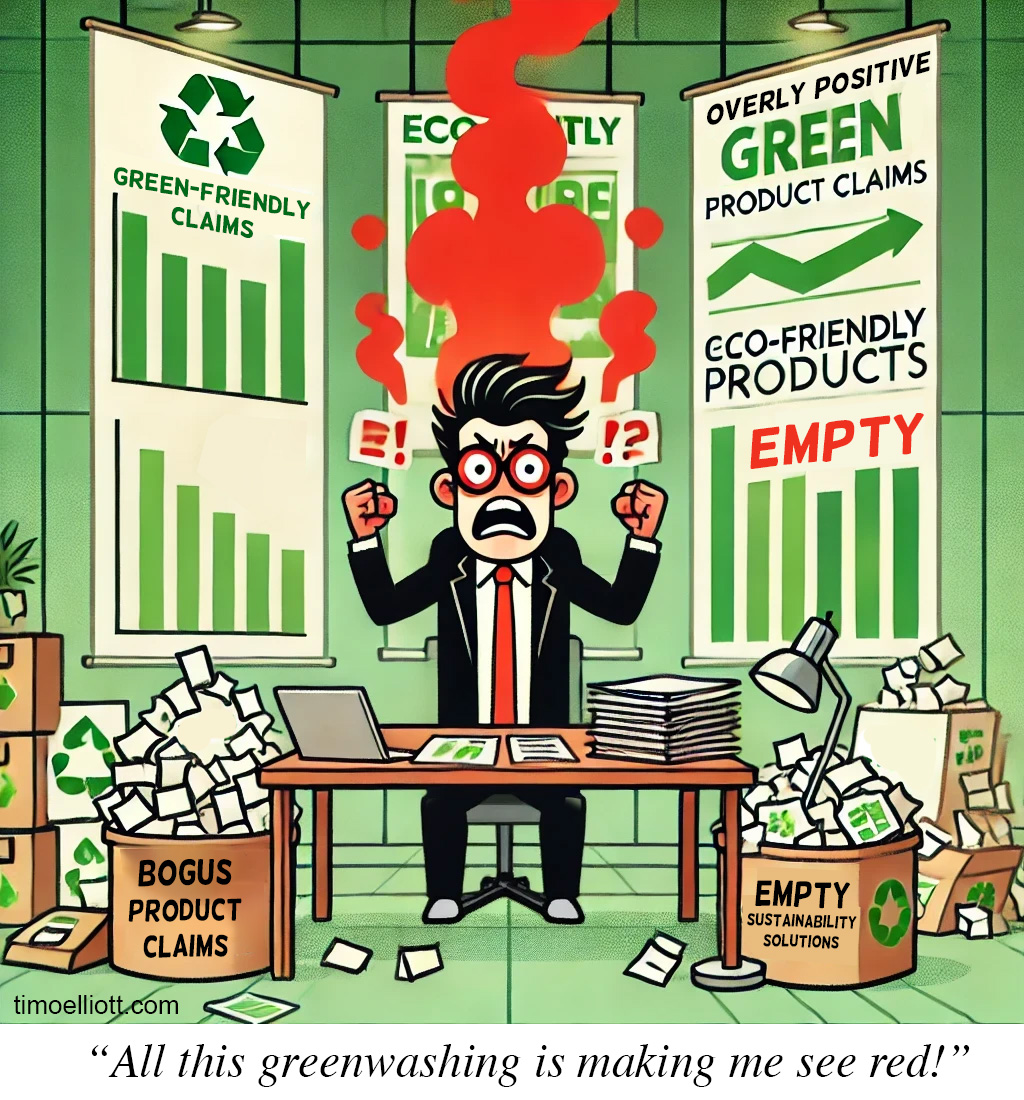
What Is Greenwashing?
The term “greenwashing” was coined nearly 40 years ago by New York environmentalist Jay Westerveld. In a 1986 essay, he criticized the hotel industry for encouraging guests to reuse towels to “save the environment” while making no significant efforts to reduce energy waste. Westerveld pointed out that this campaign primarily served to cut costs rather than genuinely benefit the planet. Since then, greenwashing has come to symbolize any misleading practice where organizations overstate or fabricate their environmental credentials to gain consumer trust or boost profits.
Ironically, the example Westerveld highlighted isn’t the most harmful type of greenwashing. Even though the hotels’ primary motive was cost-saving, the initiative did have a positive impact on reducing laundry-related emissions. However, many modern cases of greenwashing lack such silver linings.
Why Does Greenwashing Persist?
Greenwashing is pervasive because it works—at least in the short term. It’s far easier and cheaper to launch a marketing campaign touting sustainability than to implement actual environmentally-friendly changes. Studies show that consumers increasingly favor eco-friendly products, and many don’t scrutinize claims closely.
For example, a LendingTree survey revealed that 55% of Americans are willing to pay more for products they perceive as sustainable. Yet, only a fraction of consumers are equipped to spot greenwashing, especially when the advertising comes from reputable brands. The result? Companies enjoy increased sales and improved public perception without necessarily delivering on their promises.
However, when consumers do recognize greenwashing, the consequences can be severe. A backlash often ensues, leading to damaged reputations and lost sales.
A Knowledge Gap or Willful Deception?
Not all greenwashing is malicious. Many organizations lack the data or expertise to accurately assess their environmental impact. According to IDC, 37% of companies report insufficient data for ESG (Environmental, Social, and Governance) reporting, and 41% lack internal sustainability expertise. This gap between intent and execution often results in unintentional greenwashing, where companies overstate their progress toward sustainability goals.
Real-World Examples of Greenwashing
Some of the most notorious greenwashing scandals illustrate both deliberate deception and regulatory gray areas:
- Volkswagen’s Dieselgate: The automaker was fined over \$25 billion in 2015 for equipping vehicles with devices that manipulated emissions tests. Despite high ESG ratings, Volkswagen’s actions revealed a stark gap between its stated values and actual practices.
- Danish Crown’s “Climate-Friendly Pork” Campaign: The Danish meat producer claimed its pork was “more climate-friendly than you think.” While technically true compared to beef, pork production still emits substantial greenhouse gases. Surprisingly, courts ruled that such claims were permissible without concrete evidence, highlighting the ambiguity in current regulations.
A Regulatory Turning Point in the EU
Greenwashing’s days may be numbered, at least in the European Union. The EU is implementing stricter rules, such as the Empowering Consumers for the Green Transition Directive (ECGT) and the Green Claims Directive (GCD), which complement existing sustainability legislation like the Corporate Sustainability Reporting Directive (CSRD).
Key Changes Under the New Rules
- Substantiation of Claims: All environmental claims must be backed by scientific evidence, verified by third parties.
- Ban on Misleading Advertising: Vague terms like “eco-friendly” or “climate-friendly” will no longer be allowed unless fully substantiated.
- Restrictions on CO2-Neutral Claims: Products can no longer be advertised as “climate-neutral” based solely on compensation measures like carbon offsets.
- Transparency on Product Durability and Repairability: Companies will be required to disclose details such as product lifespans, repairability, and the availability of spare parts.
The Green Claims Directive adds enforcement power, aiming to harmonize sustainability standards and ensure that all voluntary green claims are credible and transparent.
What Should Companies Do?
To avoid falling afoul of these regulations, organizations must:
- Invest in Data and Expertise: Accurate ESG reporting requires robust data collection and sustainability expertise.
- Audit Marketing Claims: Regularly review advertising to ensure all environmental claims are scientifically substantiated.
- Commit to Genuine Change: Focus on measurable sustainability initiatives rather than relying on superficial campaigns.
How Can SAP Help?
SAP offers comprehensive solutions to help organizations take sustainability seriously by enabling them to monitor, report, and optimize their environmental impact. Here are some of the key SAP tools available:
- SAP Green Ledger: Integrate carbon impact as an integral part of your balance sheet, measured and managed with the same precision as financial metrics. This helps organizations ensure that carbon accounting is as precise and reliable as cash flow management.
- SAP Sustainability Control Tower: Record actual sustainability data instead of relying on averages, generate audit-ready sustainability metrics, and take informed action on unmet sustainability goals using insights, forecasts, and planning. The AI features assist in automating the sustainability reporting process.
- SAP Sustainability Footprint Management: Decarbonize your value chain with ERP-centric carbon management—calculate both corporate and product carbon footprints at scale, providing precise data to drive meaningful sustainability initiatives.
- SAP Responsible Design and Production: Manage extended producer responsibilities, including obligations related to plastic taxes, corporate commitments, and material choices, to optimize the environmental footprint of products.
- SAP Sustainability Data Exchange: Gain actionable insights into supply chain emissions, particularly Scope 3 emissions, by moving from average estimates to actual supplier data. Through initiatives like the Partnership for Carbon Transparency (PACT) by the World Business Council for Sustainable Development (WBCSD), organizations can ensure consistent and credible emission data along the entire value chain.
- Partner Solutions: Leverage SAP’s partner ecosystem to enhance ESG reporting and improve overall sustainability strategies.
- PWC ESG Reporting Manager, an 2024 SAP Innovation Award winner
- MSG Global’s AI-Powered Greenwashing Detector
Conclusion
Greenwashing may have been an easy shortcut in the past, but the landscape is changing. With the EU leading the charge and consumers becoming more discerning, companies must shift from superficial claims to authentic, data-driven sustainability efforts. Those that fail to adapt risk not only legal penalties but also a loss of consumer trust. Is your company ready for the new era of accountability?
